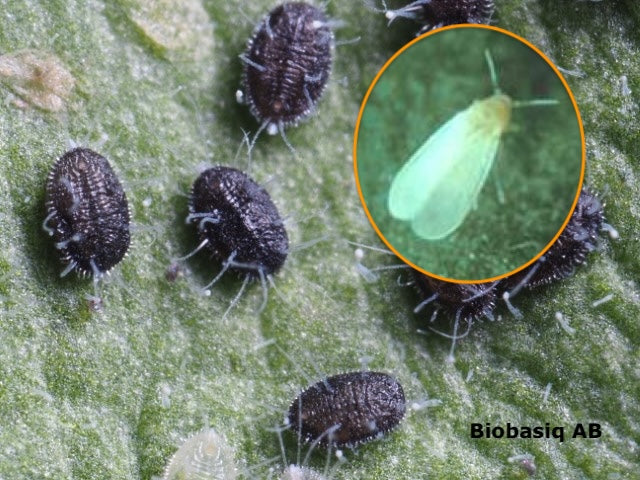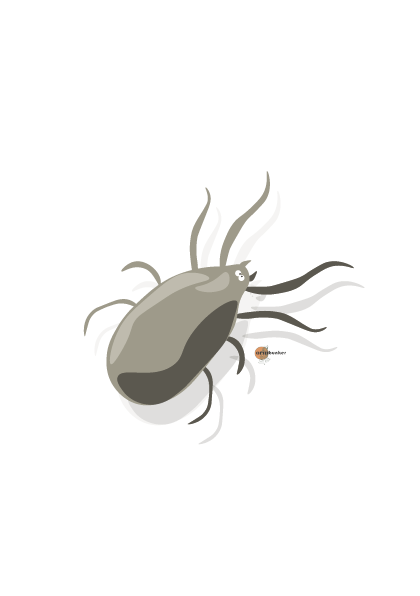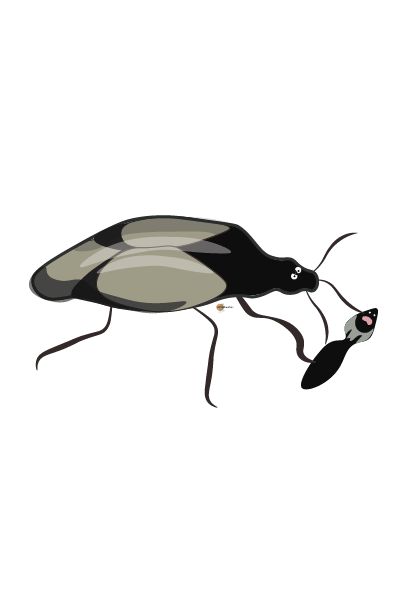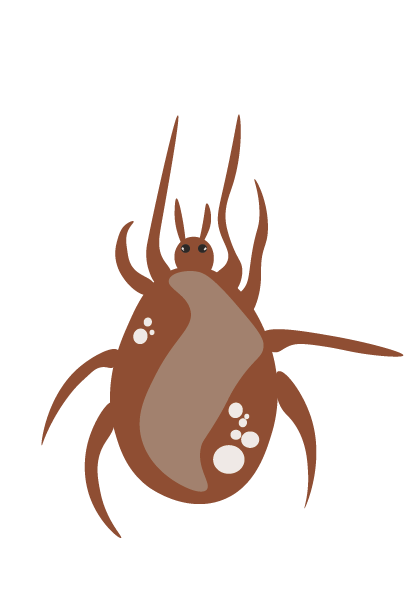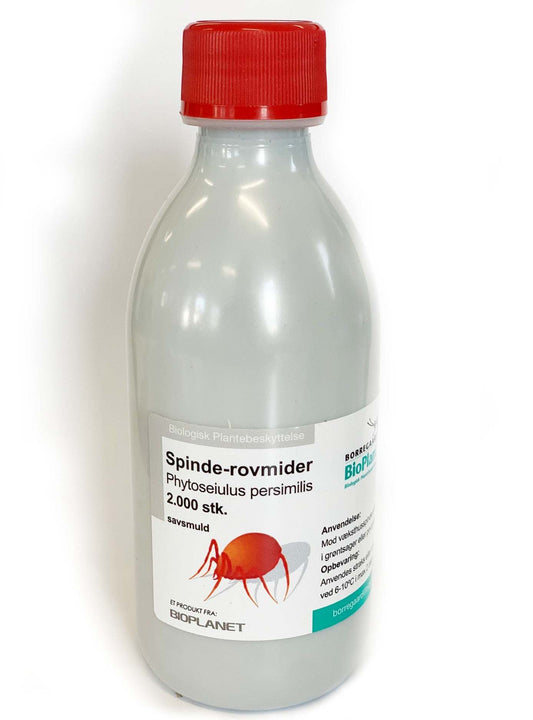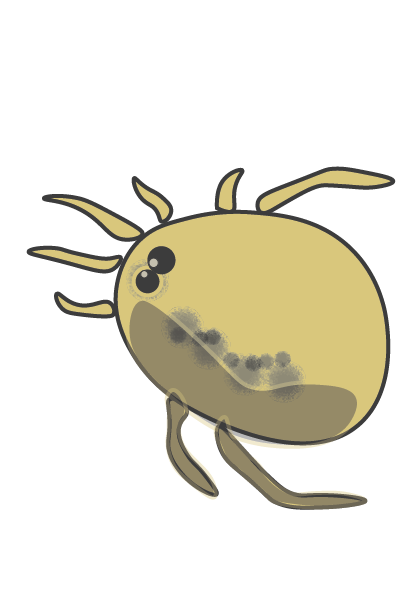Share
Pests on houseplants?
How to treat outbreaks using livestock
We've heard it before, pets are the new kid on the block, and plants are the new pet. And just like with pets, you want to take care of your 'houseplants' in the best way possible. So it's no wonder you panic when your Philodendron, Monstera or Alocasia suddenly gets thrips.
Are your plants getting yellow or brown spots on their leaves? Or maybe they just aren't doing well, despite your efforts to improve their care?
Then you might have pests on your houseplants.
But what exactly is a vermin?
In short: small insects that destroy your plants. They suck plant sap, leave sticky trails, weaken the leaves and, in the worst case, kill the plant completely. But don't worry, you don't have to resort to strong pesticides. There is a better way, namely beneficial insects .
1. Woolly, what is that white fluff?
Aphids look like little cotton balls on stems, leaf creases and around the soil surface. They suck plant sap, stress the plant and are difficult to get rid of because they are protected by their waxy "wool".

How do you get rid of body lice?
With Cryptolaemus montrouzieri, also called " The Woolly Ladybug . A voracious little ladybug that loves to eat woolly aphids of all sizes and ages. Release these near infested plants and let them do the work.

You can buy ladybugs against mealybugs here.
Tip:
Cover the infested plant in fabric and place the box inside to reduce the risk of the ladybugs flying away.
2. Aphids, small green (or black) insects
Aphids reproduce quickly and suck sap from young shoots and leaves. Aphids can also reproduce asexually. This means that one aphid is enough to start an outbreak. They can be green, black, yellow or red, sometimes with wings.

Wings only develop when the outbreak is very severe. Then the aphids fly to other plants, often causing new outbreaks.
Get rid of aphids:
Deploy our specialized beneficial animals against aphids, such as parasitic wasps that lay eggs in the aphids. Their larvae eat themselves out from the inside. Brutally and effectively.
The beneficial insects hatch from the container, which should be placed open next to infested plants, and last for 4-6 weeks.

You can buy parasite teats here .
Another alternative in the event of a very severe outbreak, or when treating plants outdoors, we recommend aphid lion instead.

This beneficial insect crawls on the same plant, which provides less coverage but is generally a more effective way to treat a limited outbreak.
You can buy aphid lionfish here.
3. Thrips, small black insects that scratch and suck (literally)
What do thrips look like?
Thrips are tiny, often black or brownish-yellow insects with slender bodies. They suck plant sap by scratching the surface of leaves, resulting in silvery spots, malformed leaves and wavy edges. You may also see thrips eggs along the veins of the leaves.

How are thrips on plants treated?
Thrip predatory mites are among the simplest and most effective beneficial insects against thrips.
Some examples are Amblyseius cucumeris , Amblyseius swirskii and Montdorensis . They love thrips larvae and eggs. Combine with Hypoaspis miles which takes care of the thrips pupae in the soil.
The thrips predatory mite we now recommend is Montdorensis. This beneficial insect also bites the increasingly common tropical thrips species (often black). We recommend hanging approximately 1 bag per plant. The beneficial insects hatch from the bag and last for 4-6 weeks.

You can buy montdorensis predatory mites here.
Another effective beneficial insect against thrips is orius beetles. Voracious hunters that can fly between plants to effectively combat even widespread outbreaks.

You can buy orius here.
Pro tip:
Get rid of thrips indoors by setting up yellow sticky traps early, preferably before you see any damage. This way you can spot them before they become widespread and quickly introduce the right beneficial insects.
4. Spin, what does spin look like?
Spider mites suck plant sap from the underside of leaves. Signs include small light spots on the leaves, dry leaves and fine spiderweb-like threads between the leaf and stem. Spiders love dry, warm environments while they hate moisture.

Useful animals against spin?
Neoseiulus californicus is a predatory spider mite that thrives in dry environments and eats both eggs and larvae.

You can buy californicus spider mites here.
We recommend hanging approximately 1 bag per plant. The beneficial insects will hatch from the bag and last for 4-6 weeks.
In case of acute attacks:
combine californicus with Phytoseiulus persimilis , which is extra fast at bringing the pest down to reasonable levels.

You can buy spider mites persimilis here.
Pro tip:
Rinse the leaves regularly or increase the humidity to effectively prevent but also treat spider mites on houseplants.
5. White flies, flee as soon as you touch the plant
Whiteflies (also called mealybugs) live on the underside of leaves. They fly up when you touch the plant, and they suck the plant's sap, causing the leaves to turn yellow and lose strength.
The larvae and pupae are completely different from the adult flying insects. They often sit under the leaves and suck plant sap.

Treat whiteflies on your plants:
Montdorensis is a beneficial insect that seeks out mealybugs and effectively controls them. Combine with yellow traps to catch adults.
Biological control is best!
Using farm animals is a natural, effective and environmentally friendly way to get rid of pests.
FAQs:
How long do farm animals live?
Most live for a few days to a few weeks depending on the species, temperature and availability of food (vermin). Therefore, it can be good to release them in batches.
Prevention tips:
-
Use sticky traps for monitoring.
-
Release farm animals before the problems become big.
-
Choose a beneficial animal based on the pest you have.
-
Use insect netting if you are worried about insects flying away. This is especially true for orius beetles against thrips and ladybugs against mealybugs.
Get rid of pests on your houseplants easily, naturally and completely without toxins.
Check out our selection to find the right beneficial animal for your plant!
We are happy to help you match pests with the right livestock.

